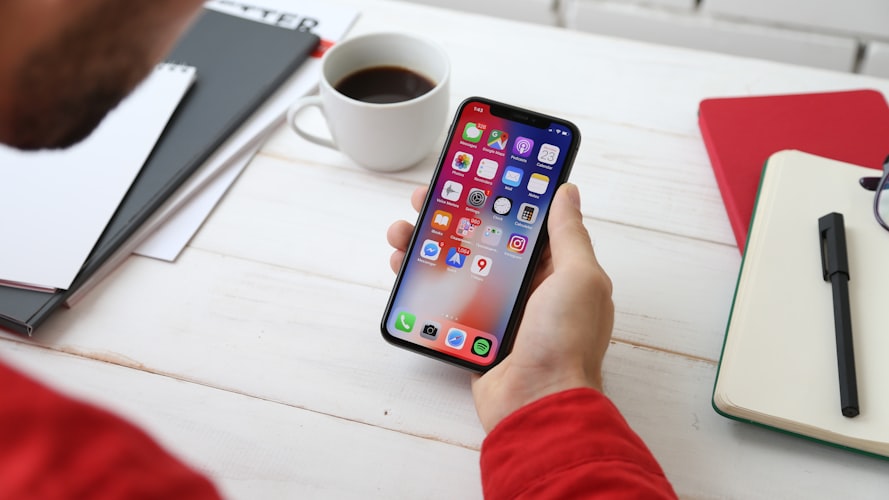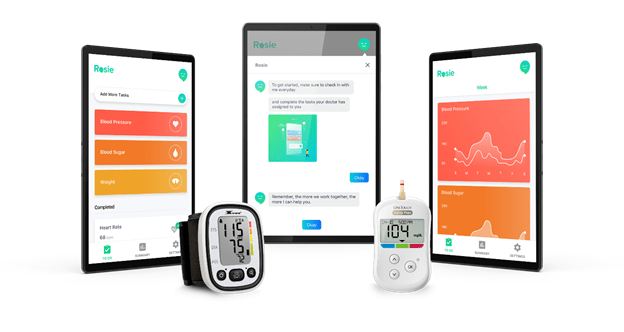
In a world that is constantly being upgraded, streamlined and enhanced by software and technology, is it possible that teaching will no longer be a human profession? What if A.I. progresses to the point that it is unfathomable that humans could even compete? What we are seeing now is the early evolutionary stages of the technology that will soon make these progressive ideas commonplace.
In many ways, this future is already here, as there are numerous applications that already teach us a variety of skills. The platforms and social media applications that we interact with have highly advanced algorithms that are programmed to provide us with the latest news and information. In our pockets at all times, is a highly advanced computer that is capable of executing numerous tasks. Whenever we wish, our smartphones can be used to teach us any task or skill. Let’s have a look at some of the ways technology is currently replacing teachers as we know it.
Phone applications
One of the most amazing things about our generation of technology is phone applications. These small software programs are often overlooked and taken for granted. To imagine such technology would be so readily available, even just 20 years ago, would be astounding.
Continue Reading
 There’s never been a more exciting era in the healthcare IT space than now. The intersection of disruptive technological innovation and a more tech-savvy generation of customers provides endless opportunities across a wide range of medical applications.
There’s never been a more exciting era in the healthcare IT space than now. The intersection of disruptive technological innovation and a more tech-savvy generation of customers provides endless opportunities across a wide range of medical applications.
The healthcare industry has traditionally been reluctant to embrace tech. Given the strict regulations, the sensitivity of healthcare, and the potentially deadly consequences if something does go wrong, this reluctance is understandable. Slowly but surely though, healthcare is embracing IT, thereby unleashing new levels of efficiency and customer satisfaction.
Here’s a look at some of the key tech trends that are fast establishing a foothold in healthcare.
Continue Reading
Lenovo introduces Lenovo Virtual Care, a full patient-to-provider virtual solution to remotely monitor, guide and educate patients with various chronic health conditions. In partnership with Vianova Health, Lenovo Virtual Care combines trusted Lenovo hardware with advanced biometric devices and AI-powered software to virtually coach patients through their individualized care plan and drive better overall outcomes.
Virtual Care joins the recently launched Virtual Rounding as part of Lenovo’s growing portfolio of Virtual Health solutions to accelerate intelligent transformation in healthcare. Demand for virtualized access for patients to their health data and providers will persist as healthcare systems transform to meet the evolving demands of more patients with chronic conditions, stressed care teams, and payers searching for more value-based care. Lenovo remains committed to building innovative devices and solutions that support and adapt to the changing healthcare landscape.
Using Lenovo Virtual Care, clinicians provide patients with a customizable, in-home technology kit equipped with a digital assistant, “Rosie,” that guides the patient through an individualized, daily care plan incorporating patient education, behavior modification and family engagement. Providers prescribe the use of the service and pre-configure the easy-to-use kit, allowing patients to plug it in at home and immediately start following their individualized care plan.

Lenovo Virtual Care with digital assistant – “Rosie”
Lenovo’s Virtual Care solution allows clinicians to continually assess and engage with enrolled patients, reducing the need of multiple in-person visits and readmissions. Patients use in-home biometric devices, such as blood pressure cuffs and glucose monitors, to take their vitals and transmit the data to their care teams.
Continue Reading
A business degree opens the door to a variety of opportunities, but it’s not the graduation ceremony that marks the starting point in one’s professional journey. It all begins with choosing your future alma mater.
Many schools around the world can serve as a perfect springboard for your lucrative career path, but some truly mastered this art. They can promise state-of-the-art business knowledge and practices, great entrepreneurship outcomes, and hefty return on investments in the form of higher post-graduation salary rates.
Harvard Business School
Since its foundation in 1908, Harvard Business School has become a perpetual trendsetter when it comes to the standards of business education. In fact, it was Harvard University that launched the world’s first MBA program setting the high benchmark for others to follow.
The HBS is one of the pioneers in applying the case method of teaching. The main point of this approach is to place students in the role of decision-makers right from day one. With about 500 cases read during the two-year MBA program, novice professionals learn to identify pressing issues, exercise appropriate judgment, become adept at countering their ideas, and develop their business instincts.
Continue Reading

It’s been more than 35 years since the original at-home pregnancy tests came on the market. Since then, there has been a surge of home-testing options and you can get your lab tests at home, driven by a fervid interest in wellness, expediency, cost-efficiency, convenience, and the ease made possible by technology.
The technology behind at-home diagnostics
Rapid test results came to fruition through lateral flow immunoassay (LFIA). Immunoassay is a technique to analyze and measure concentrated substances, such as antibodies and hormones. Lateral flow immunoassay is a diagnostic device that can be configured to work with a variety of liquid samples, including blood, urine, serum, and saliva. Lateral flow devices (LFDs) can take on different forms that are compact and simple to employ, such as a dipstick or a housed cassette. LFDs are engineered to be intuitive and can be operated with little training, so testing can be performed by a patient at home as easily as a technician in a laboratory or a health care practitioner in a clinic.
Continue Reading

Besides the obvious reason that they aren’t sick, more factors hinder people from consulting a doctor, and some of them are concerning. On top of that, booking an appointment can be an excruciating process. It’s not uncommon for medical staff to put patients on the phone on hold for too long, only to tell them later that all slots are taken and that they should pick another schedule.
Thankfully, the problem of making appointments has been addressed, and the solution is quite a game changer. Medical facilities started using efficient patient portals, which is basically a website that allows patients to access their medical records online, including lab results from tests. The website can also be used to schedule appointments, pay bills, and exchange messages. Some portals are even equipped with more convenient features such as digital prescription renewals. There’s also the alternative of using a WordPress booking system or doctor appointment software if you have a small clinic.
But can patient portals encourage hesitant individuals to finally go to the doctor? By going over the discouraging factors listed below, we’ll find out whether digital technology can truly bridge the gap between patients and doctors.
Continue Reading
 Going to a hospital or other healthcare practice has always been a stressful process for patients. To ensure that their patients are comfortable, healthcare providers need to make sure they are improving the customer experience as much as they can.
Going to a hospital or other healthcare practice has always been a stressful process for patients. To ensure that their patients are comfortable, healthcare providers need to make sure they are improving the customer experience as much as they can.
In recent years, healthcare providers have been able to improve the patient experience using technology. Today, there are a number of ways in particular that healthcare service providers are improving the patient experience through comfort and convenience.
Telehealth
One of the fastest-growing trends in the healthcare industry has been the continued development and expansion of telehealth and telemedicine. Going to the doctor for a checkup can be a time-consuming process for all people involved.
Because of the amount of time spent sitting in public waiting rooms and signing forms, it also could lead to the spread of germs. With telehealth, you can receive a full checkup from your physician at home. They can also help to address questions that you have, which improves communication. This technology could drastically reduce the number of people that need to go to a physician’s office.
Continue Reading
We live in troubled times.
When the coronavirus appeared in the United States after wreaking havoc around the world, it found a country with many socioeconomic structural weaknesses to expose—dysfunctional political parties, an economy based on incessant consumerism, no universal healthcare program, and a long history of police brutality.
In the ensuing chaos, America’s elderly received scant media attention, other than healthcare warnings that they were the most vulnerable population during the pandemic.
Continue Reading

 There’s never been a more exciting era in the healthcare IT space than now. The intersection of disruptive technological innovation and a more tech-savvy generation of customers provides endless opportunities across a wide range of medical applications.
There’s never been a more exciting era in the healthcare IT space than now. The intersection of disruptive technological innovation and a more tech-savvy generation of customers provides endless opportunities across a wide range of medical applications.


 Going to a hospital or other healthcare practice has always been a stressful process for patients. To ensure that their patients are comfortable, healthcare providers need to make sure they are improving the customer experience as much as they can.
Going to a hospital or other healthcare practice has always been a stressful process for patients. To ensure that their patients are comfortable, healthcare providers need to make sure they are improving the customer experience as much as they can.